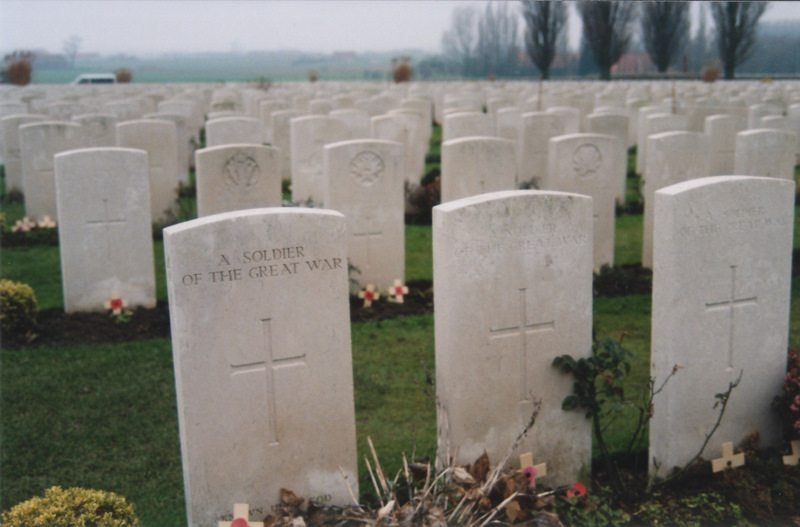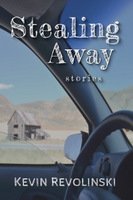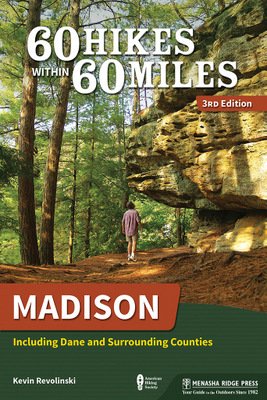Where the Poppies Grow: Touring Flanders Fields
 The sky was a gloomy gray, the wind painfully cold, and I had to step carefully around thick muddy patches where the recent rain reflected the slate of the clouds. It seemed like a rotten day to be on a tour, but in this case the November weather played a supporting role in the narration of our guide.
The sky was a gloomy gray, the wind painfully cold, and I had to step carefully around thick muddy patches where the recent rain reflected the slate of the clouds. It seemed like a rotten day to be on a tour, but in this case the November weather played a supporting role in the narration of our guide.
I was paying a visit to Flanders Fields, also known as the Salient, a flat, soggy piece of land in western Belgium that saw some of the worst carnage of World War I. The Germans viewed the Salient as the best route to the English Channel and it was the purposeful flooding of a portion of it by locals that prevented them from taking it immediately. Allied troops were able to dig in at what was to be known as the Western Front where things were anything but quiet. Millions of shells fell and hundreds of thousands of lives were lost from 1914 to 1918 in this small area of around 25 square miles. Our guide, Genevra was a British woman who clearly felt a deep passion for this piece of history and we were taken shivering along through life and death in the trenches.
Our group stood before concrete bunkers buried in the low ridge along a canal just outside Ypres (Ieper), Belgium. These dark windowless chambers were where the wounded were sorted: there were those who could be returned to the field with a cleaned wound, those who needed serious medical attention at sites farther from the front lines, and those who could only be given morphine to ease them through a violent death. When the shelling began, the iron doors were closed off and the only opening to the outside world was a six-inch-wide pipe that led up through the concrete and earth above. For hours the wounded would lay close together in the dark and the thought of it should be enough to give a shudder to anyone standing there now just short of a century later.
 It was here in Ypres that the now famous poem “In Flanders Fields” was composed by a Canadian Lt. Colonel and physician, John McCrae. “In Flanders fields the poppies blow, between the crosses row on row…” The crosses that stood row on row are now headstones, some with names, some without. Some men, some merely boys. I glimpsed one who died when he was sixteen. The youngest recorded was fourteen; he had enlisted when he was eleven.
It was here in Ypres that the now famous poem “In Flanders Fields” was composed by a Canadian Lt. Colonel and physician, John McCrae. “In Flanders fields the poppies blow, between the crosses row on row…” The crosses that stood row on row are now headstones, some with names, some without. Some men, some merely boys. I glimpsed one who died when he was sixteen. The youngest recorded was fourteen; he had enlisted when he was eleven.
The town of Ypres, like the wooden crosses, was obliterated during the war. Everything has been rebuilt in exactly the same fashion as it was before the people were evacuated for the duration of the war. It is a lovely town, full of what look to be old buildings, and it has a peaceful cheeriness about it far removed from its troubled past.
 It is that troubled past, however, that brings tourists. Today there are 160 cemeteries in this little corner of Europe and within twenty-five square miles of soil over half a million men lie, many whose exact location will be forever unknown. Almost all of the cemeteries are for the Allies. The land was given to them in perpetuity by the Belgian government. The Germans are charged rent, as it were. The tour stopped at one of the four German cemeteries, which were consolidated from 68 over the years. Somber black headstones and oak trees rise above tens of thousands of lost men. Hitler (a veteran himself of the trench warfare of the Western Front) once visited the cemetery and used the experience not as a reminder of the senselessness of war but as propaganda to fuel another one.
It is that troubled past, however, that brings tourists. Today there are 160 cemeteries in this little corner of Europe and within twenty-five square miles of soil over half a million men lie, many whose exact location will be forever unknown. Almost all of the cemeteries are for the Allies. The land was given to them in perpetuity by the Belgian government. The Germans are charged rent, as it were. The tour stopped at one of the four German cemeteries, which were consolidated from 68 over the years. Somber black headstones and oak trees rise above tens of thousands of lost men. Hitler (a veteran himself of the trench warfare of the Western Front) once visited the cemetery and used the experience not as a reminder of the senselessness of war but as propaganda to fuel another one.
There is only one American cemetery-named Flanders Fields, in fact-located farther east near the town of Waregem. There are 386 American soldiers buried there and a tablet remembers 43 of the missing. As our guide pointed out, many of the American dead were brought home. More than 116,000 Americans lost their lives during World War I and nearly 31,000 of them rest in overseas military cemeteries while 4,452 more are commemorated on our Tablets of the Missing. The muddy puddles that we stepped around were nothing compared to the vast fields of sucking muck that had often swallowed up the dead and made an already unbearable war even more horrific.
The tour stopped at Tyne Cot, the largest Commonwealth war cemetery with almost 12,000 headstones and panels with the names of thousands whose remains were never found or identified. But even this doesn’t capture the enormity of it all. Genevra gave us another way of looking at it, “In these fields, for every step you take, imagine 35 dead men.”
 On the average 200 tons of iron is recovered from the land each year and a lot of that is brought up by area farmers. Some of it is live ordnance and quite dangerous during the plowing season. As we drove along the countryside toward the Canadian memorial and cemetery, an object laying by the roadside caught Genevra’s attention and she pulled the van over to show us. It was one of the gas shells the Germans used to release a deadly cloud of chlorine which moved with the wind into the midst of the Allied troops killing or blinding thousands. “The Belgian Bomb Disposal Unit is supposed to collect these and unexploded shells.” The thought of curbside pickup for a deadly gas canister was unsettling. Each tank had to be scanned, frozen and then cut into pieces before being eradicated. “It’s expensive, and there’s a backlog of 26,000 shells.”
On the average 200 tons of iron is recovered from the land each year and a lot of that is brought up by area farmers. Some of it is live ordnance and quite dangerous during the plowing season. As we drove along the countryside toward the Canadian memorial and cemetery, an object laying by the roadside caught Genevra’s attention and she pulled the van over to show us. It was one of the gas shells the Germans used to release a deadly cloud of chlorine which moved with the wind into the midst of the Allied troops killing or blinding thousands. “The Belgian Bomb Disposal Unit is supposed to collect these and unexploded shells.” The thought of curbside pickup for a deadly gas canister was unsettling. Each tank had to be scanned, frozen and then cut into pieces before being eradicated. “It’s expensive, and there’s a backlog of 26,000 shells.”
Our final stop for the day was the Trench Museum, a somewhat cluttered collection of war artifacts, medals, helmets, guns, and shell casings, some of which have been fashioned into artwork. But the stereoscopic photo collection is perhaps the most memorable, a disturbing three-dimensional display of the conditions and some of the atrocities of the war. Outside the small building is a system of trenches, still filled with water and mud as they must have been, and left for us to wander through with petty concerns about trouser cuffs. The trees have returned but a few stumps stand like broken shards in the earth where war had broken them.
To go during winter in the low season can be a little uncomfortable. But the gray skies, the scattered rain stirring up the mud, the aching cold can be appropriate companions on this tour. Where I could stamp my feet in Thinsulate waterproof boots and climb back into a heated tour van after fifteen minutes, others had spent months even years up to their knees in water and mud, fighting off trench foot and other diseases as much as the enemy themselves.
In the spring and summer the land is beautiful and the flowers bloom with no regard for the morbid soil. It is an irony that battlefields move on long before we have, and an important one to maintain. The land forgets easily, and even the craters and trenches carved sharply in the earth eventually smooth over. But we can imagine the lives of so many boys caught in the insanity of men being taken up into the verdant fields and trees that bring life back to a land of death. And so, though the poppies still grow, even the beauty of Flanders fields may be a reminder of the losses of the brave many.
***********************
Buy a Poppy
Poppy seed can lie dormant in the ground for years. Four years of battle and an endless barrage of shells churned the soil of the Western Front making conditions ideal for waves of poppies to blanket the graves.
Since the 1920s it has been a tradition for veterans to sell tiny red paper flowers. The practice started when Frenchwoman Anna Guerin and Moina Michael from Georgia, inspired by McCrae’s poem “In Flanders Fields,” led a campaign to sell the artificial flowers to raise money for those orphaned or left destitute after the war. The Veterans of Foreign Wars made it their official flower of remembrance in 1922, using money from sales to assist veterans in need.
***********************
IF YOU GO
Salient Tours, info@salienttours.com, +32 (0)57-214-657. Tours from $47
Where to Stay:
Albion Hotel, St.-Jacobsstreet 28, Ypres 8900, Belgium; Tel. +32 (0)57-200-220
Hotel Ariane, Slachthuistraat 58, Ieper 8900, Belgium; Tel. +32 (0)57-218-218
Hotel Old Tom, Grote Markt 45, Ypres, Belgium; Tel. +32 (0)57-201-541
*****************************************

The entire poem by McCrae is available online from Project Gutenberg
“In Flanders Fields”
by Lieutenant Colonel John McCrae, MD (1872-1918) Canadian Army
In Flanders fields the poppies blow
Between the crosses row on row,
That mark our place; and in the sky
The larks, still bravely singing, fly
Scarce heard amid the guns below.
We are the Dead. Short days ago
We lived, felt dawn, saw sunset glow,
Loved and were loved, and now we lie
In Flanders fields.
Take up our quarrel with the foe:
To you from failing hands we throw
The torch; be yours to hold it high.
If ye break faith with us who die
We shall not sleep, though poppies grow
In Flanders fields.



 ORDER YOUR COPY TODAY!
ORDER YOUR COPY TODAY! ORDER YOUR COPY TODAY!
ORDER YOUR COPY TODAY!
Well written. Thank you. I’ll explore your site. Frost